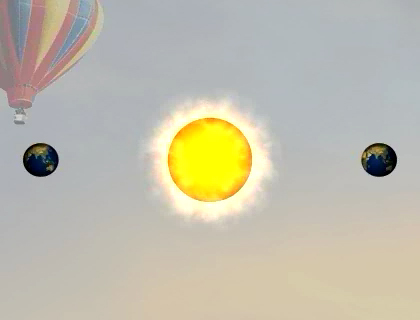Atmosphere Contents
3. Energy Variation
Obliquity: The Earth's obliquity (tilt) affects the amount of radiation received at different places
The Earth has an oblique axis of rotation. This means that the Earth's axis of rotation is tilted slightly from the vertical between 22° - 24.5° over a 41,000 year cycle. Currently, the Earth's axis of rotation is tilted by approximately 23.5°. Therefore, with this tilting effect, the hemisphere tilted towards the sun will receive more solar radiation and the opposite hemisphere will receive less. Note that the total amount of radiation remains constant over the Earth, but the obliquity tilt unevenly distributes that radiation across the Earth's surface. Overall, the effects of obliquity produce the greatest changes at the poles and are relatively small at the equator.
The higher angles of tilt produce more extreme seasons (hotter summers, colder winters) because the tilt allows more radiation to cover the hemispheres in the summers, whereas during the winters the tilt turns each hemisphere away from the sun and less radiation is received.
What is obliquity, and what is its effect?
